
Students practice using map elements to study location, distance, and directions and create maps of the local community, comparing differences in human characteristics in rural and urban communities.
- Provider:
- CSCOPE
- Date Added:
- 04/17/2017

Students practice using map elements to study location, distance, and directions and create maps of the local community, comparing differences in human characteristics in rural and urban communities.
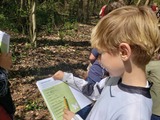
The NC Kids' Exploration Journals are a fun educational tool to help youth explore their communities and natural surroundings! Each journal contains: 18 multidisciplinary activities with guided prompts, 6 lined journal pages for recording observations and reflections, and 4 blank pages for individual creativity.
The digital versions of the journal are designed to be printed out for students either as individual activities or in its entirety so that they can explore their school yard, local park, or own backyard. Though designed for 1st - 5th-graders, older audiences may enjoy them too! They are also available in both English and Spanish languages.
While supplies last, hard copies of the journals are currently available for free to teachers by contacting karen.ipock@ncdcr.gov.

In this lesson, students learn about Civil War legacies by examining Winston and Salem's Civil War experience and demonstrate their understanding by creating an illustration.

Students explore the characteristics of the physical environment of communities, including their own community, in order to describe and explain variations in the physical environment, including climate, landforms, natural resources, and natural hazards. They also explore these characteristics to identify and compare how people in different communities adapt to the physical environment in which they live. They also look at the journals of Christopher Columbus.

Students will examine two pairs of banners from the woman suffrage movement and then write a banner to match one banner that is missing its pair.

In this lesson, students practice using language related to chronology. They work with the histories of their own lives as well as the history of their school. They begin to learn about different sources of information.
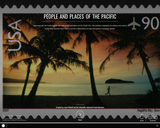
Students can learn about how people from the Pacific region have been represented on stamps over the history of the United States. This is a resource from the Smithsonian Postal Museum and it addresses the culture of the United States.

Students learn about historical and contemporary figures who contribute to a community's culture by introducing ideas that change, expand, or shape communities. Students learn through historical figures who exemplify good citizenship the importance of the characteristics of good citizenship and acts of civic responsibility.

In this activity, students will view and analyze oral histories of naturalized citizens. Through interpretation of the interviews, they will develop a better understanding of recent naturalization experiences. Each oral history includes not only the record of the interview, but also incorporates an object that belongs to the informant.

In this activity, students will identify and interview a naturalized citizen. During the interview, students will also draw out the story behind one special belonging of the naturalized citizen. Through compiling the interview, students will work to understand a recent naturalization experience, while developing technical skills in video production. Each video interview will then be publicly shared to enable other students to learn from that citizen’s story.

Students will learn some details about the civil rights movement. They will explain historical events that occured in local communities as well as see the impact of contributions made by historical figures in local communities over time. They will be able to explain change over time through historical narratives and how multiple perspectives are portrayed through historical narratives.

In this lesson, students will actively read Rachel Carson and Her Book That Changed the World using the suggested reading strategies. Part of an OurStory module entitled Discover and Protect Nature, this activity includes a list of challenge words, active reading suggestions, and background information.

Students will think of three symbols to represent Dr. Martin Luther King Jr. and create a window decoration with those symbols.

Students will look at ways artists and members of the public responded to the events of September 11, 2001. You will then use images of those responses to create a digital memorial of photographs.
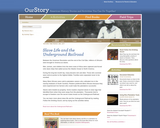
Students can access a variety of materials and activities from the Smithsonian Museum which connect with the life of slaves and the Underground Railroad.

Students will play the role of newspaper reporters in order to research, write, and publish an article about the history of the Star-Spangled Banner. This is connected with the Smithsonian Museum in Washington, DC.

In this lesson, students learn about the story of Ruby Bridges.
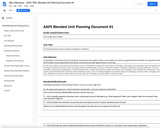
In this unit students use primary and secondary sources of information to explore the early history of Michigan. They begin by examining the work of historians and the types of questions they ask. Then, they apply historical thinking skills to a study of American Indians in Michigan, exploration and early settlement. The unit provides a strong link to geography as students analyze ways in which both American Indians and settlers used, adapted to, and modified the environment. Through stories and informational text, students examine Michigan's past. Civics is naturally integrated as students explore how Michigan became a state. Throughout the unit, emphasis is placed on major historical concepts such as chronology, cause and effect, and point of view.

Students will assume the role of fictional Americans in 1963 and make decisions based on the evidence found in a historical artifact related to the March on Washington for Jobs and Freedom.
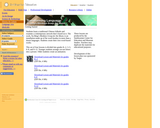
In these lessons, students learn a traditional Chinese folktale and examine a contemporary artwork that’s based on it. The work, Xu Bing’s Monkeys Grasp for the Moon, is an installation made up of the word monkey in more than a dozen languages. Students create their own word-based works. This set of four lessons is divided into grades K–2, 3–5, 6–8, and 9–12. Younger students arrange cut-out letters into a picture. Older students create an animation.